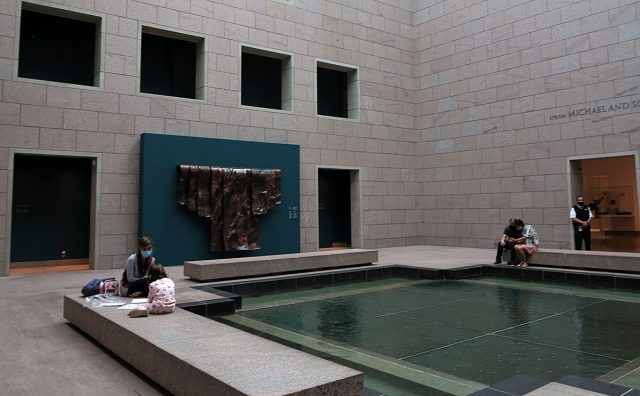ARTICLE: National Gallery of Canada feature on Michael Belmore’s “Lost Bridal Veil Falls”
As people, we may modify and intervene, make a mark or deliver a blow, but we are only a small part in the sequence of what has come before and what will come after. At this overwhelming time of increasingly accelerated societal and climate change, I have appreciated how artist Michael Belmore’s work has us consider glacial speed and the permanence of natural materials. In this consideration, there is transcendence beyond this mere moment. The elements of Earth are resolute and will remain. Belmore’s oeuvre is a contemplative murmuration of this statement of fact.
In the Fall of 2020 I had chance to chat with Michael Belmore (www.michaelbelmore.com) about his copper work Lost Bridal Veil Falls installed at the National Gallery of Canada after it was acquired in 2017. In the article, Michael Belmore: Materials and Deep Time, our conversation touches on his labourious artistic process of chasing and repoussé along with the importance of copper to the Anishinaabeg.
A lot of my work speaks to deep time: the process, endeavour and persistence when looking at how a rock can be worn down on a shoreline or on a beach to become sand. I think about how long that would take. It happens and we know it happens, but we as human beings can’t comprehend the time it takes – millennia – to wear down something as hard as stone to sand. Instead, we get stuck in our own mortality. It comes back to that idea of making or leaving a mark. My marks are made in copper and stone, two of the most durable materials on the planet. The intention is to have a larger and longer conversation with the environment and not to linger on one’s own worth.
The work is installed in one of the most contemplative locations in the Gallery – the Water Court in the Michael and Sonja Koerner Family Atrium – that as Michael points out is the only place in the Gallery that has the elements of rock, water and sky. It also has the added auditory experience of the sound installation of Janet Cardiff’s Forty-Part Motet that at times wafts into the room with moments of crescendo then stillness. Unfortunately, soon after we spoke the Gallery was closed, with a short reopening, only to shut down again. One of the most stunning works on display at the NGC, I look forward to the moment when I can revisit it again…and again.
Read full article here.
IMAGES: Leah Snyder


No Comments